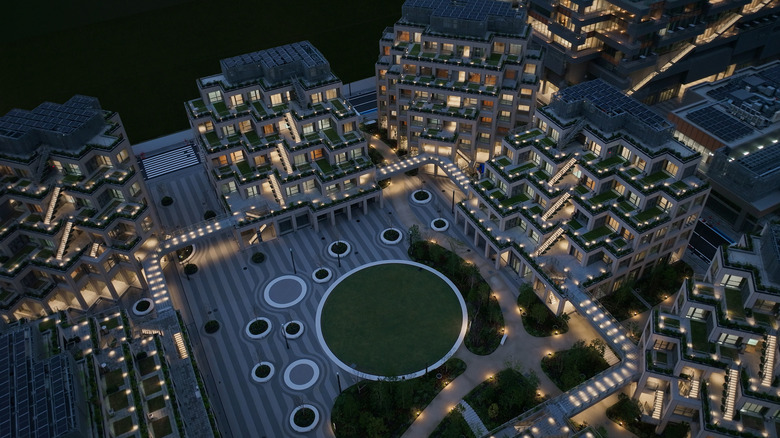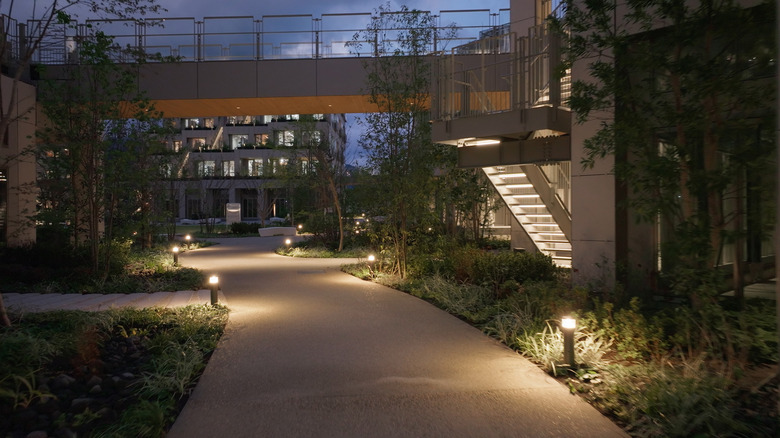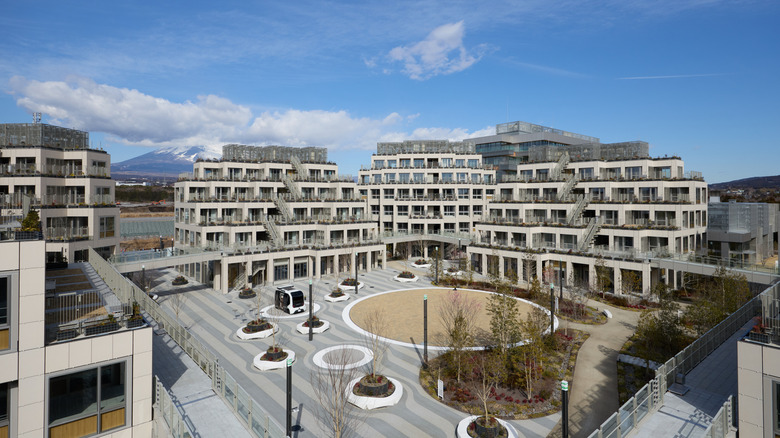Why Did Toyota Build A Smart City And Where Is It Located?
The closing of Toyota Motor East Japan's Higashi-Fuji Plant has given way to a first of its kind — a smart city at the base of Mount Fuji in Susono City. Known as the Woven City, this futuristic "living lab" will be run on solar power created by hydrogen-powered fuel cells, have smart homes and offices made by robots using ancient Japanese woodworking techniques, and test out the latest robotics, AI, and automotive technology. According to Toyota CEO Akio Toyoda, Woven City is for those that "want to make a real difference in the way we live, in how we care for the planet, and how we care for each other."
Woven City is based on Toyota's desire to meet all 17 development goals of the United Nations. These include things like gender equality, climate action, good health, zero hunger, no poverty, and quality education. However, Toyoda's lofty goals for the Woven City doesn't end there — he believes there should be an 18th goal: happiness. "Happiness is something we all desire and we all deserve," he said. "I want this to be the goal and the guiding light for everything we build and create at the Woven City."
Who will live in Toyota's Woven City?
Once Woven City is ready for community members to move in, Toyota envisions 2,000 people, a blend of inventors and residents, living in it. The inventors will be a blend of Toyota employees, entrepreneurs, researchers, and engineers who will develop products and services aimed at better mobility and lifestyle within the region. And they'll get real-time feedback from the residents, also known as "weavers." These are individuals who are passionate about future mobility technology and want to experience these inventions hands-on. Weavers are ideally people from all over the world with diverse backgrounds who can offer a wide range of perspectives for the inventors to help them keep shaping the products. Some are already being implemented in smart cities today, and others will shape the future of smart cities.
"By inviting researchers and scientists into this living laboratory, we hope to be able to partner and learn what kinds of technologies can be practically deployed and also the kinds of technologies people enjoy and want," said Woven Planet Holdings CEO James Kuffner. "Anyone who lives in the Woven City is a willing participant and in fact a co-founder," he later added, saying it will be an "incredible, diverse population of people who are willing and eager to explore new technologies to improve our daily lives."
It's expected to be open officially in fall 2025 — but only to select people
Toyota initially announced the company's shift to mobility at CES 2018 and then revealed the Woven City concept at CES 2020. Since then, the 50,000-square-mile city has been making steady progress, including a groundbreaking ceremony in early 2021 at the site of the former Higashi-Fuji Plant. By 2024, Toyota had completed construction of the Phase 1 buildings, and Phase 2 is currently being planned.
According to Kuffner, there has been "incredible interest" worldwide in becoming a weaver, and the official opening of Woven City is expected to happen in the fall of 2025. At this point, it will let in 100 residents, largely Toyota staff and their family members. By the end of Phase 1, there will be about 360 residents, with the initial population mostly comprising of senior citizens and families. Phase 2 will allow for the full 2,000, and by 2026, the general public will be permitted to visit Woven City. Toyota's hope is that it will shape the future of how people live and the technologies they will use as we continue to see the pros and cons of smart cities unfold.


